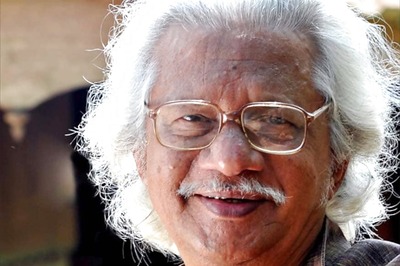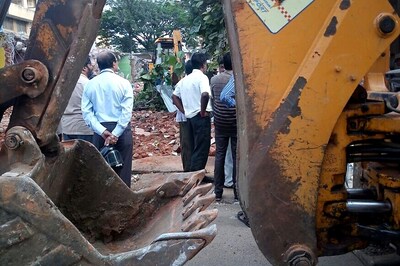
views
CHENNAI: Four years after he introduced the world to the Glued Intra-ocular Lens (IOL) surgery for the eye, Dr Amar Agarwal continued his mission to spread his expertise around the world, as he demonstrated this surgery live before the Italian Ophthalmic Society, via video conferencing from Chennai on Friday afternoon. “I’ve always said that there’s no point in advancing medical science and then keeping it to yourself. You’ve got to ensure that every doctor can replicate it and put it to good use,” said the top surgeon.Operating on a 60-yearold patient from Andhra Pradesh at his eye hospital, Dr Agarwal performed the surgery where he inserted a soft core, three-piece foldable IOL into the patient’s eye, without using sutures.“We’ve done over 2,000 surgeries of this sort with excellent results across our chain of hospitals in the country and the follow up has been amazing,” he exclaimed.Watching with rapt attention, over 300 eye surgeons were gathered at the CME program titled ‘Cataract Surgery in Complex Cases’ in Rome, while Dr Agarwal explained the once-complex surgery, with consummate ease. After inserting the lens, when he demonstrated the ‘handshake’ technique, his personal term to explain how the ends were stretched and glued, they were visibly impressed.“We’ve found that using a glue base made of fibrinogen and a bit of thrombin yields the best results in the quickest possible time,” added Dr Agarwal, as he wrapped up the operation in just over 10 minutes. Calling glued-IOL surgeries the future, he decried the usage of sutures to repair these lenses because not only did it cause irritation, it also loosened over time, which made the lens mobile and not fixed.Once he wound up, he fielded questions from the Italian eye surgeons about the dimension of the lens used and other techniques that he had displayed. Explaining the different sizes used, he said, “Most of the time a standard 13-mm lens will be sufficient for any eye, but in rare cases there may be a need to use a 14-mm lens,” and mentioned that there was only one manufacturer who provided the extra-large lens.When another eye-doctor from Italy mentioned complications that he had been facing in trying to replicate the surgery, Dr Agarwal easily suggested a solution that would ensure the surgeries would succeed. “He complained that he was experiencing captive iris syndrome in the patients that he operated on. I suggested that it was because the lens was too anterior and that he should consider doing a vertical glued IOL surgery that would shorten the distances between the eye wall and correct the issue,” concluded the president elect of the ISRS-AO.As this is the first time that the technique was being video demonstrated across continents, from India, it a particular moment of pride for Dr Agarwal.“Normally, we only take advancements from the West, but for a change, a pioneering surgery has gone from India across the world!” he said.




















Comments
0 comment